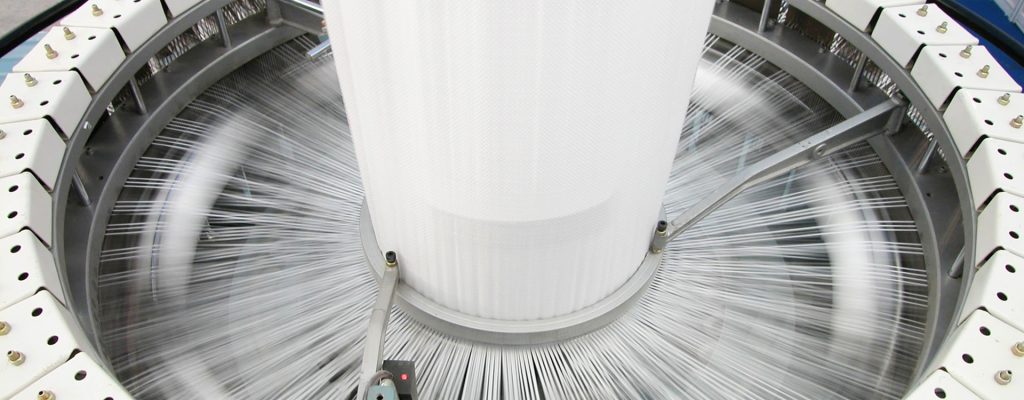
Introduction
In China’s fast-paced industrial sector, FFS woven bags have become indispensable for their efficiency in automated packaging and adaptability to diverse storage needs. These bags, which integrate seamless forming, filling, and sealing processes, are increasingly customized with color-coded strips (e.g., blue for chemicals, green for agriculture) to simplify inventory management. For VidePak, a company with 30+ years of expertise and a global footprint, the fusion of high-performance PP materials and strategic branding innovations has enabled it to dominate markets ranging from construction to food packaging. This report explores how VidePak’s FFS woven bags address China’s evolving demands through technical excellence and intelligent design.
Market Dynamics: China’s Packaging Boom
China’s packaging industry is projected to grow at a 6.8% CAGR through 2030, driven by e-commerce, agriculture, and infrastructure development. FFS woven bags, valued for their durability and automation compatibility, now account for 35% of the country’s bulk packaging sector. Key drivers include:
- Automation Demand: Over 60% of Chinese warehouses now use robotic systems, requiring standardized, machine-readable packaging.
- Sustainability Pressures: Government policies like China’s “Plastic Pollution Control Plan” mandate recyclable materials, pushing brands toward PP-based solutions.
VidePak’s Edge: With 100+ Starlinger circular looms and 30+ lamination machines, the company produces 15 million FFS bags monthly, achieving a 99.2% defect-free rate. Its global certifications (ISO 9001, Sedex) further bolster credibility in regulated markets like Europe and North America.
Customization: Color Coding and Beyond
1. Color-Coded Labels for Inventory Efficiency
VidePak’s FFS bags feature color strips (red, blue, green, yellow) printed using UV-resistant inks, enabling instant product categorization. For example:
- Blue Strips: Chemicals and fertilizers (aligned with UN safety standards).
- Green Strips: Agricultural products (linked to China’s GB 4806-2016 food safety regulations).
Case Study: A Jiangsu-based agrochemical company reduced warehouse sorting errors by 45% after adopting VidePak’s color-coded bags, which integrated with their SAP-based WMS for real-time tracking.
2. Smart Labeling Innovations
- QR Codes: Embedded QR codes store batch numbers and expiry dates, scanned via PDA devices to update inventory systems instantly.
- RFID Tags: Optional RFID layers enable bulk scanning, cutting inventory audit times by 70%.
Dialogue Example:
Q: “How do color strips withstand harsh environments?”
A: “Our PP granules are blended with UV stabilizers, ensuring color retention even after 12 months of outdoor storage.”
Warehouse-Optimized Designs
1. Stackability and Space Utilization
VidePak’s FFS bags are engineered with reinforced block-bottom structures, allowing vertical stacking up to 8 layers without deformation. This design increases pallet capacity by 20%, critical for high-density logistics hubs like Shanghai.
2. Ergonomic Features
- Grip Handles: Molded handles reduce worker strain during manual handling.
- Tear Notches: Pre-cut notches enable quick opening without tools, aligning with OSHA safety guidelines.
Technical Insight: A 2024 study in Packaging Technology and Science found that ergonomic designs reduced warehouse injury rates by 18% in automated facilities.
VidePak’s Production Capabilities
| Parameter | Specification |
|---|---|
| Bag Dimensions | 30–80 cm (width), 50–120 cm (height) |
| Printing Colors | Up to 8-color CMYK, Pantone-matched |
| Production Speed | 1,200–1,500 bags/hour |
| Material Thickness | 80–150 GSM, customizable for load capacity |
| Certifications | ISO 9001, Sedex, REACH, FDA-compliant |
FAQs: Addressing Industry Pain Points
Q1: How long does custom color labeling take?
A: VidePak’s modular printing system delivers prototypes in 72 hours and bulk orders within 10 days.
Q2: Are these bags suitable for food-grade applications?
A: Yes, our FDA-compliant PP resin and antimicrobial coatings meet GB 9685-2016 standards for direct food contact.
Branding Trends: Beyond Functionality
Chinese clients increasingly demand branded packaging to differentiate products. VidePak’s solutions include:
- Glossy Finishes: BOPP lamination enhances logo visibility, boosting brand recall by 30%.
- Eco-Branding: Recyclable bags stamped with “GreenGuard” logos appeal to ESG-conscious buyers.
Case Study: A Zhejiang fertilizer brand saw a 25% sales increase after switching to VidePak’s glossy, eco-labeled FFS bags, which doubled as mobile billboards in rural markets.
Sustainability and Compliance
VidePak’s “Zero Waste” initiative uses 100% recycled PP granules for non-critical layers, reducing carbon footprint by 40%. Its partnership with GreaterWMS ensures blockchain-based traceability, a feature demanded by EU importers under CBAM regulations.
Conclusion
FFS woven bags are no longer mere containers—they are strategic tools for branding, compliance, and supply chain efficiency. VidePak’s fusion of Austrian engineering (Starlinger), color-coded intelligence, and ESG-aligned production positions it at the forefront of China’s packaging revolution. As automation and sustainability reshape the market, the company’s innovations promise to redefine industry standards.
External Links:
- Explore how Starlinger technology enhances FFS bag efficiency.
- Learn about custom-printed woven bags for brand differentiation.